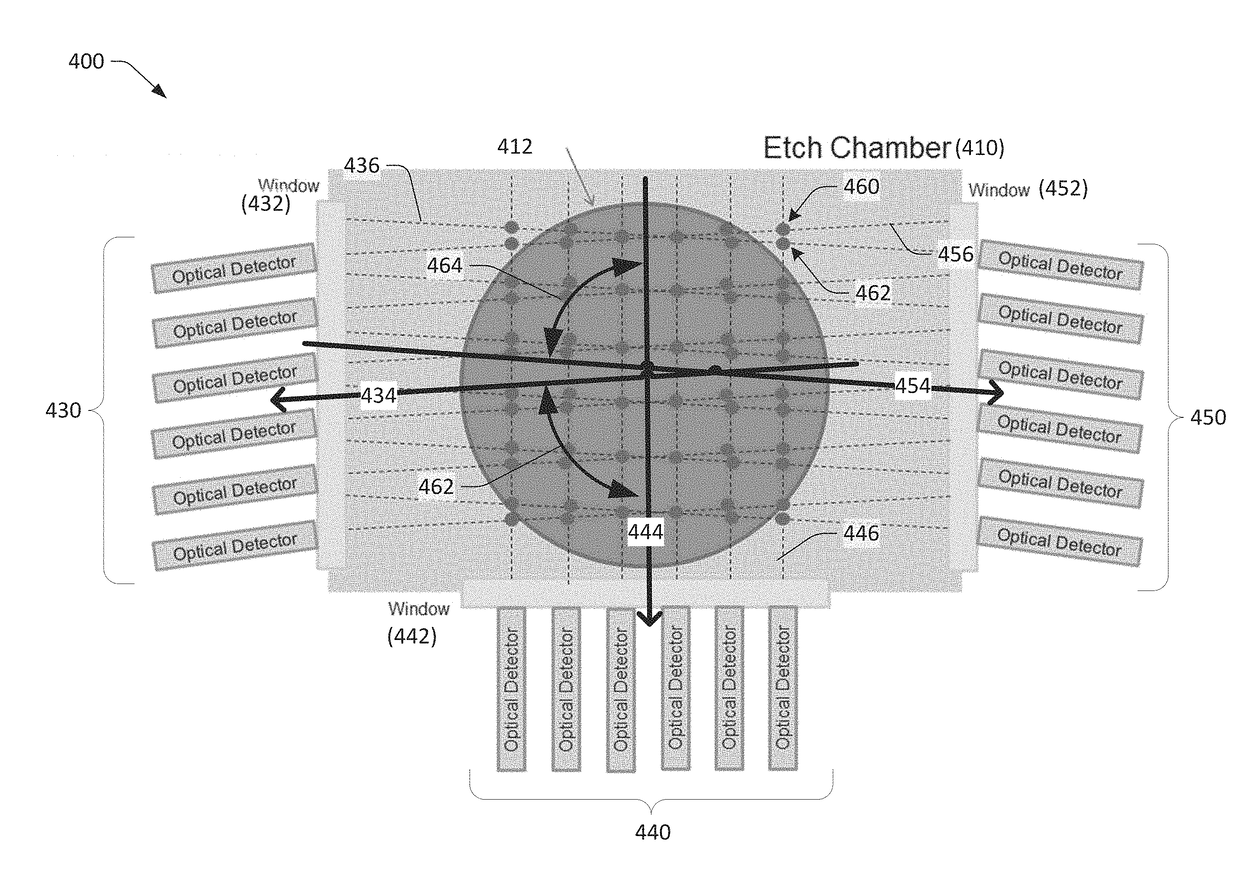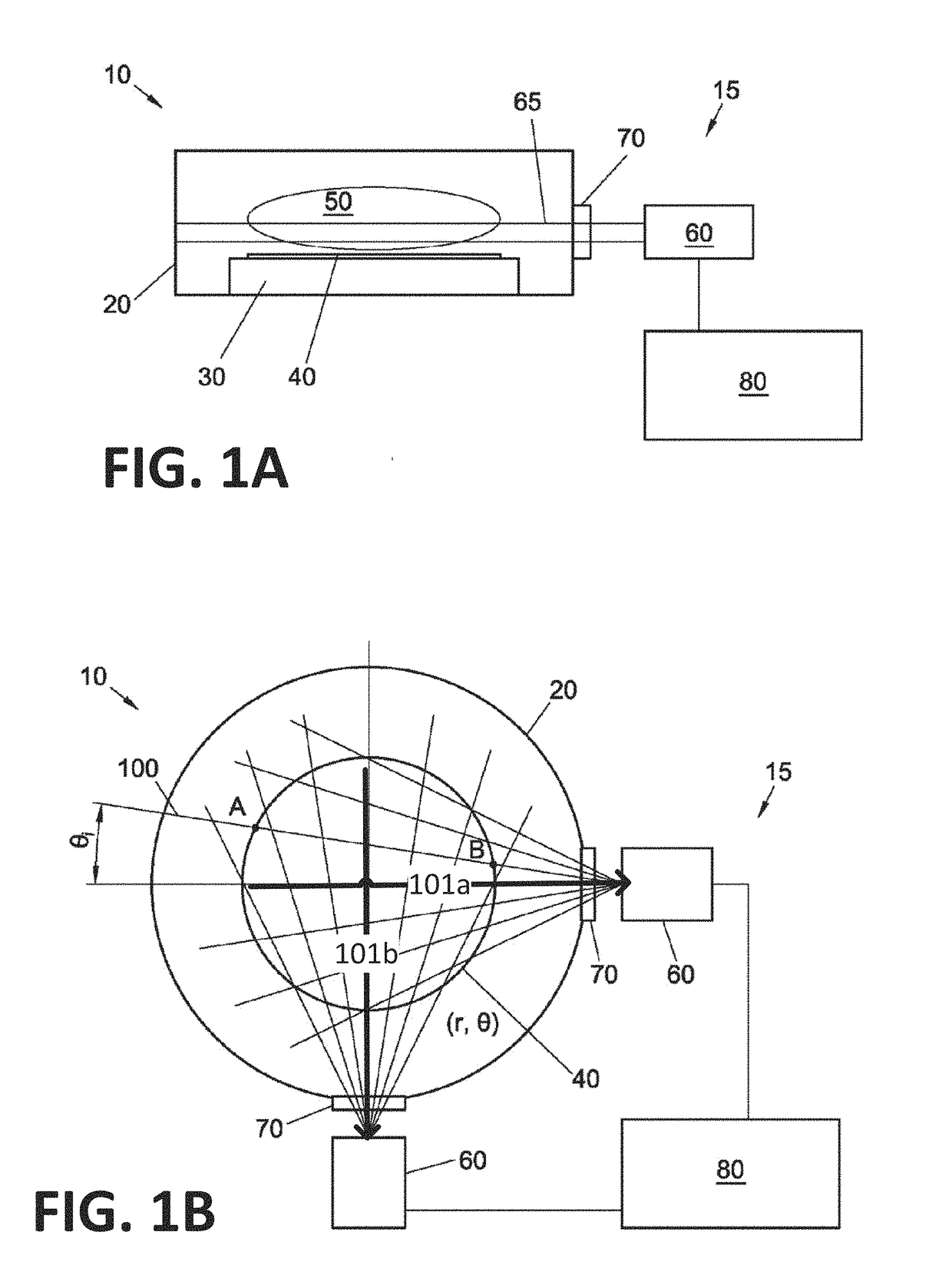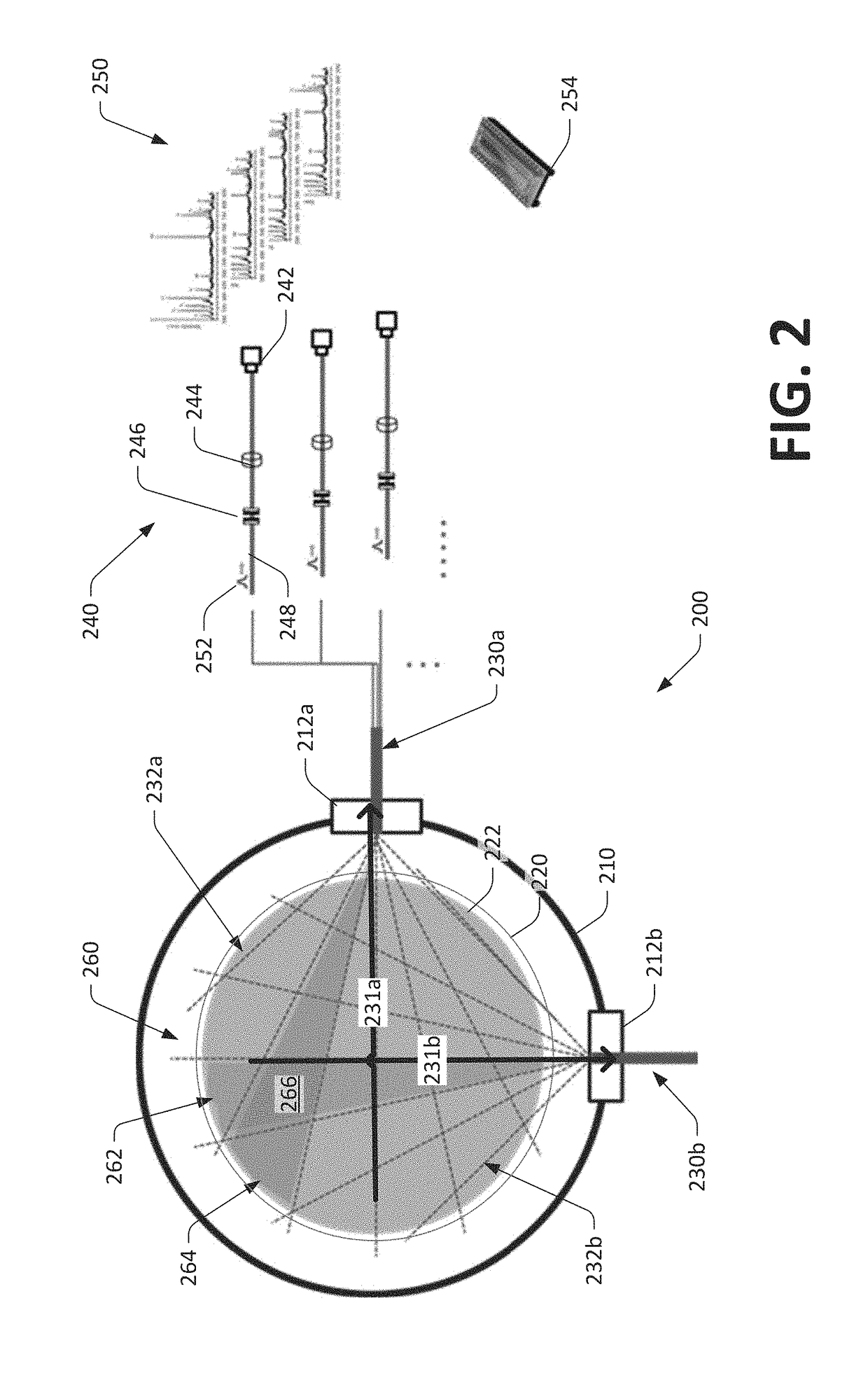Computed Tomography using Intersecting Views of Plasma using Optical Emission Spectroscopy during Plasma Processing
- Summary
- Abstract
- Description
- Claims
- Application Information
AI Technical Summary
Benefits of technology
Problems solved by technology
Method used
Image
Examples
example plasma processing
Systems
[0018]In the development of plasma processes, it is useful to know the two-dimensional distribution of chemical species of interest above the surface of the substrate being processed. With this knowledge, changes in the system design and / or process parameters can be made to minimize variations of the processing outcome across the substrate.
[0019]In addition, a detection of an abrupt change in particular chemical species in the plasma can signal the end of a plasma processing step (i.e., endpoint). For example, a detection of a chemical species than the one that was being etched on the substrate may indicate that the etching process is complete. Ability to determine the plasma processing step endpoint across the entire surface of the substrate leads to improved device yields. This is because the processing step does not end prematurely.
[0020]FIGS. 1A and 1B show an example of a plasma processing system 10 suitable for use with an embodiment of the technology described herein. ...
example methodological implementation
[0078]FIG. 6 shows an example process 600 illustrating the technology as described herein. The example process 600 may be implemented as part of computed tomographic reconstruction (TR) system. That system is part of or works in cooperation with a plasma OES system.
[0079]At block 610, a TR system obtains light measurements from the detection grid in the plasma. The detection grid is formed by the intersecting rays of a collection of optical detectors configured to receive incoming rays from plasma over a substrate on a substrate holder in an etch chamber of a plasma processing system. These measurements includes intensity of particular wavelengths and for particular bands of wavelengths.
[0080]At block 620, the TR system generates a computed tomographic reconstruction of chemical species of the plasma. The computed tomographic reconstruction includes chemical species identification (622), spatial location determination (624), and the association between the two (626). More specifical...
PUM
 Login to View More
Login to View More Abstract
Description
Claims
Application Information
 Login to View More
Login to View More - R&D
- Intellectual Property
- Life Sciences
- Materials
- Tech Scout
- Unparalleled Data Quality
- Higher Quality Content
- 60% Fewer Hallucinations
Browse by: Latest US Patents, China's latest patents, Technical Efficacy Thesaurus, Application Domain, Technology Topic, Popular Technical Reports.
© 2025 PatSnap. All rights reserved.Legal|Privacy policy|Modern Slavery Act Transparency Statement|Sitemap|About US| Contact US: help@patsnap.com



